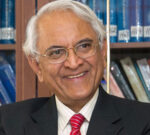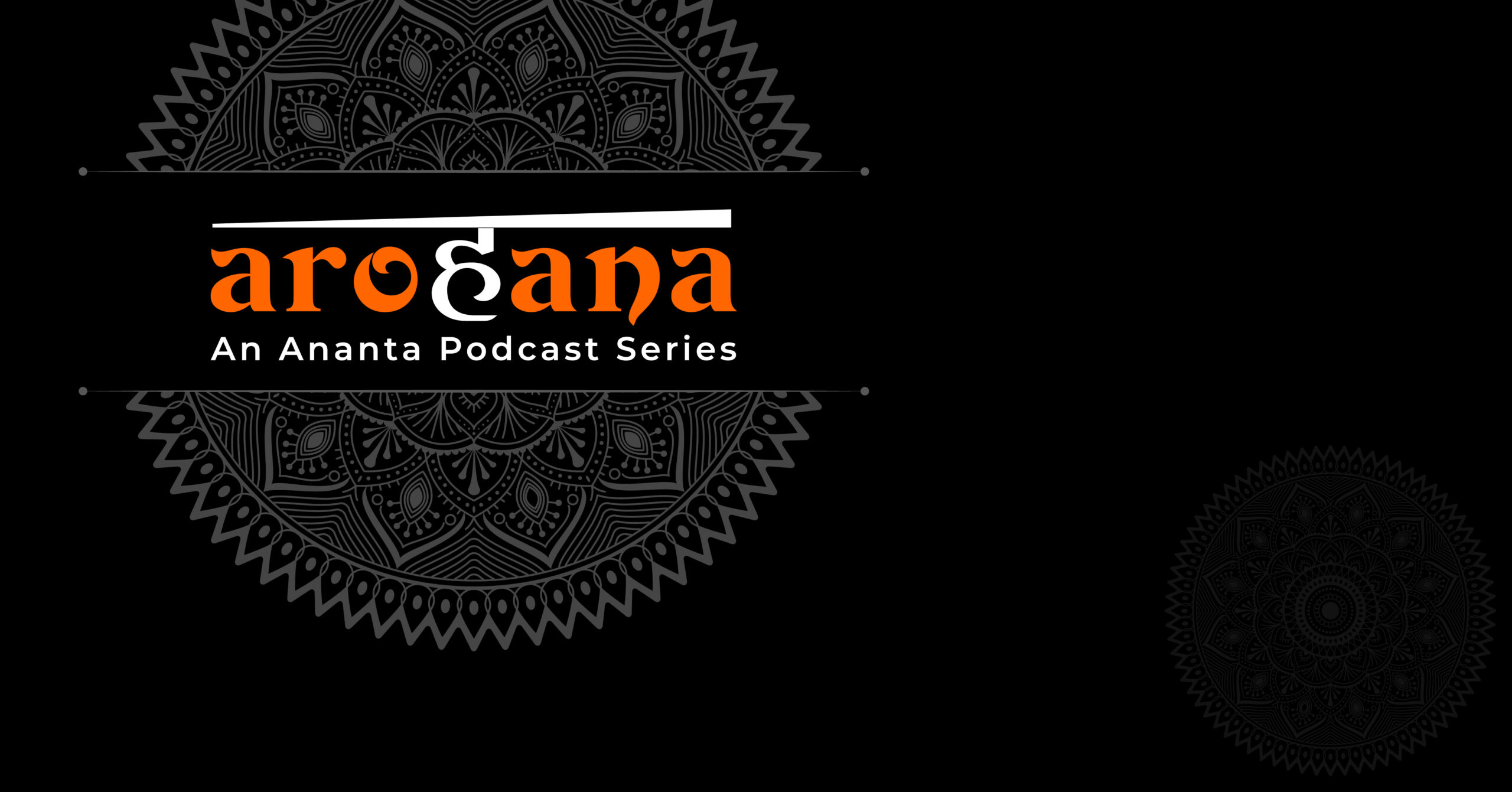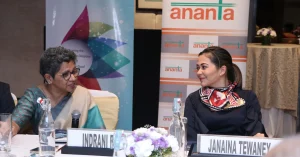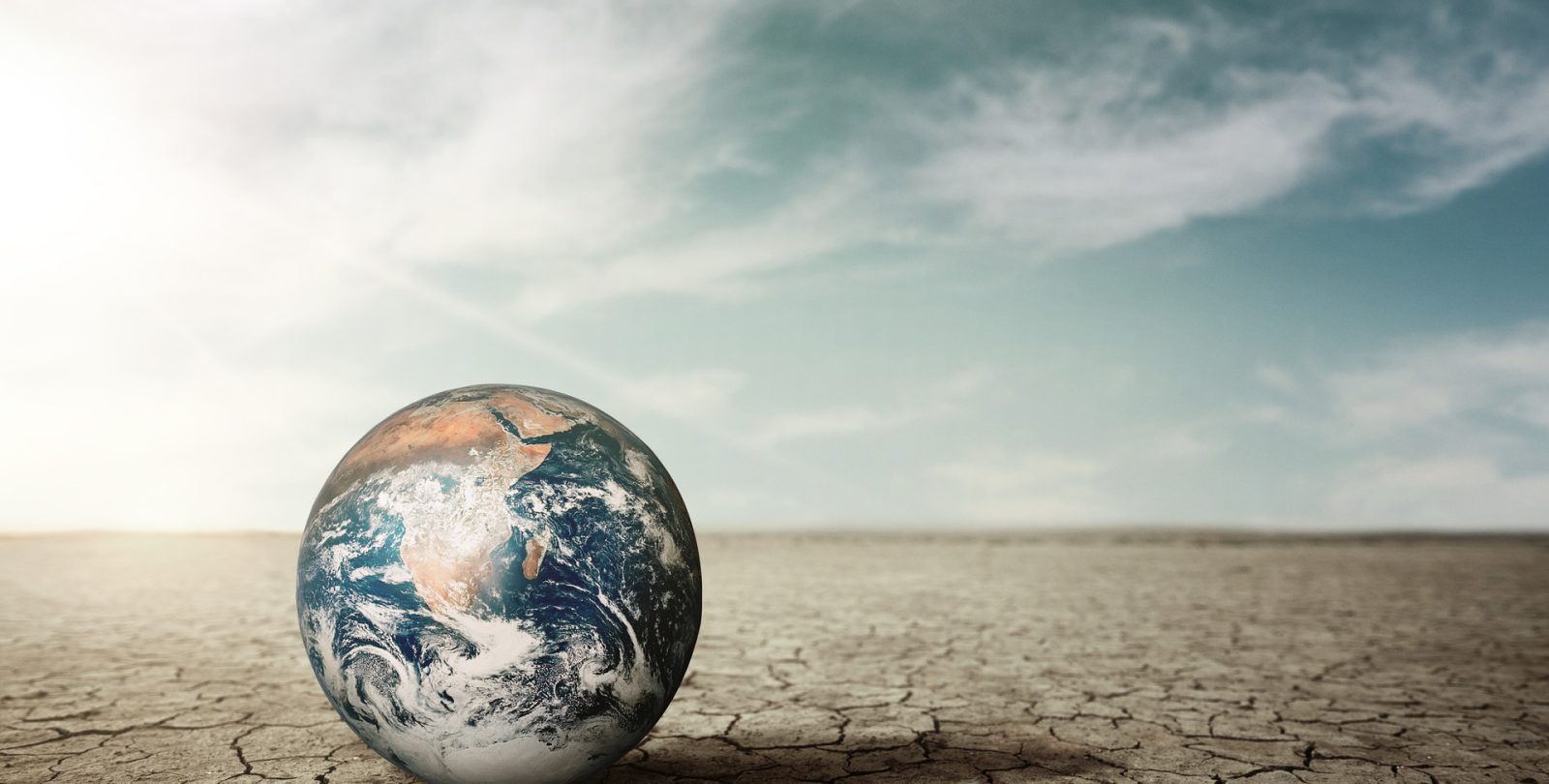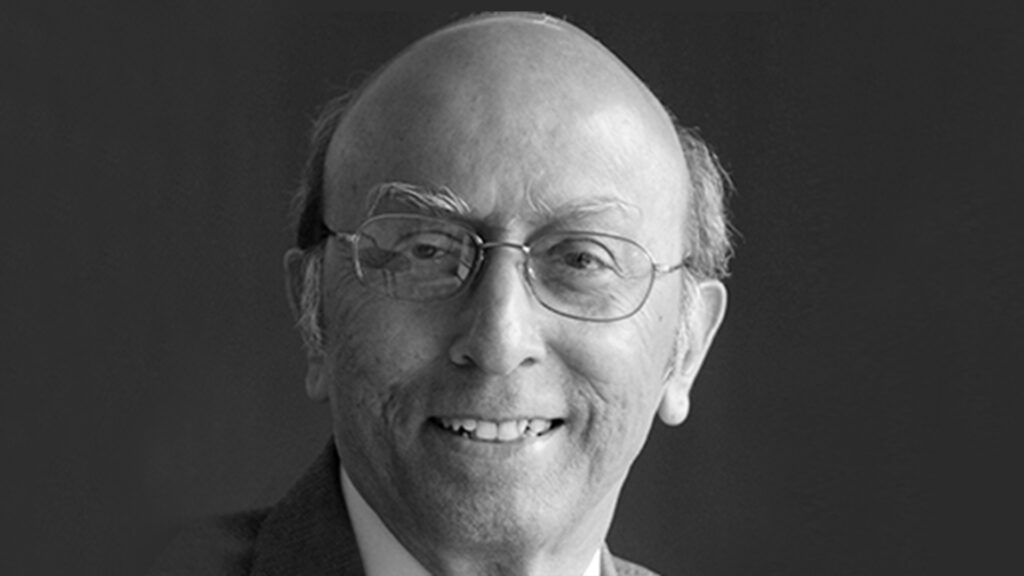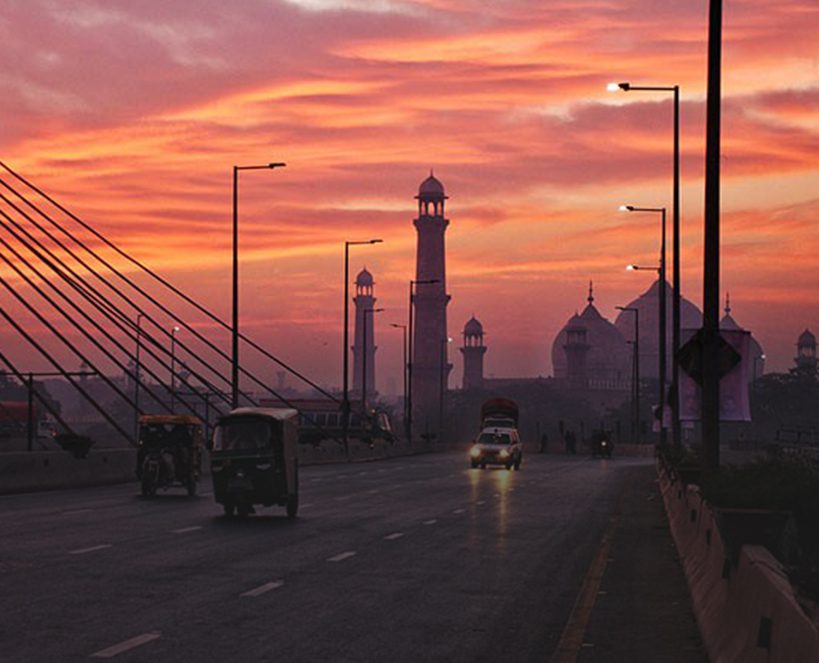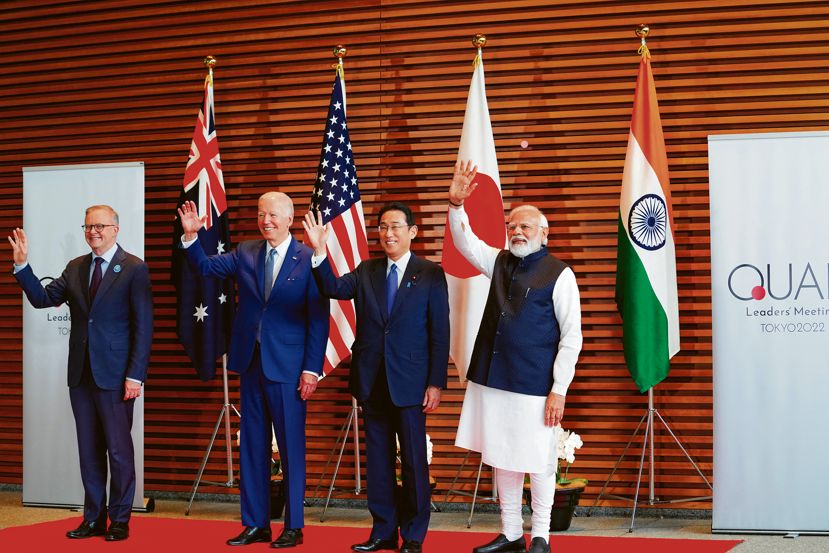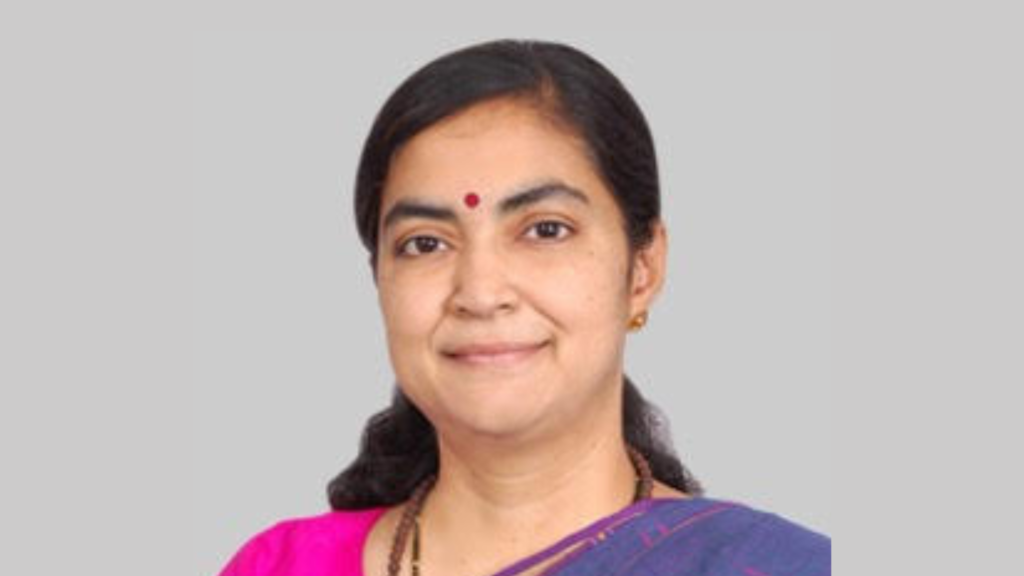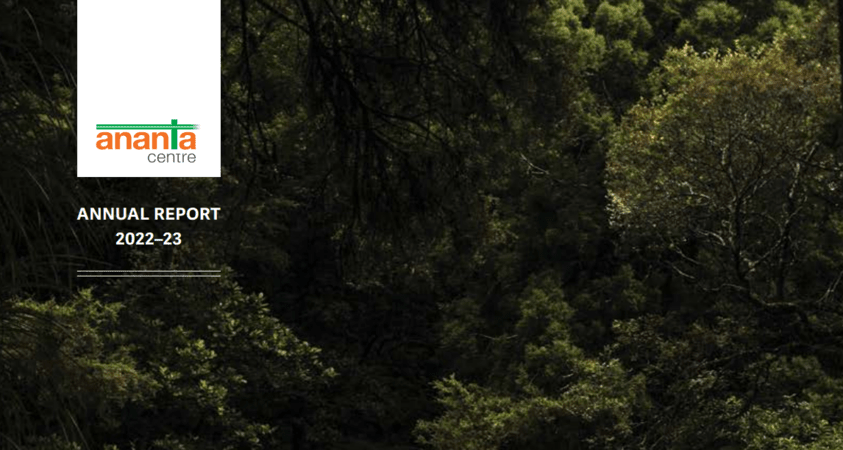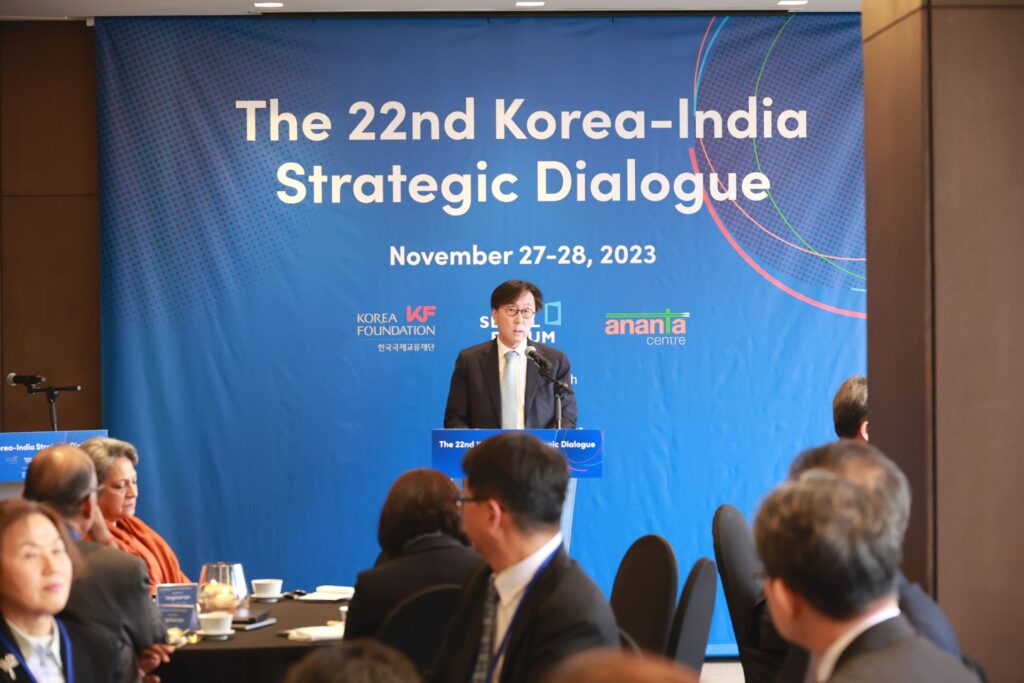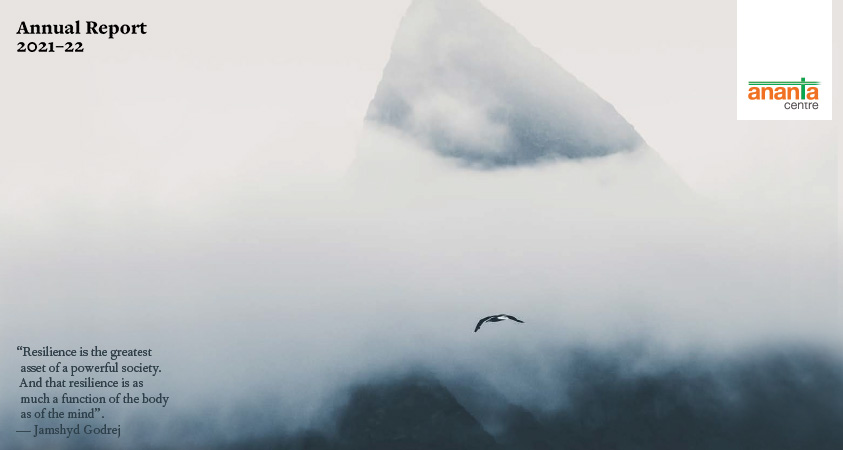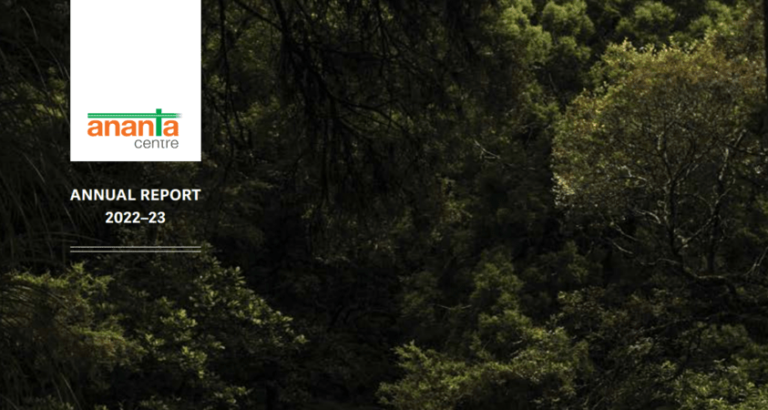SPECIAL ISSUE
RUSSIA GOES TO WAR
Russia leaps over the cliff
After four months of Russian troops massed on Ukraine’s borders, President Putin announced his decision to launch a “special military operation” into Ukraine, early in the morning on 24 February. This was preceded by an equally dramatic announcement on 21 February of Russia’s recognition of the two self-declared Donbas “republics” of Donetsk and Lugansk, followed by the signing of a treaty of friendship and cooperation with each of them.
In an angry speech, he railed against the way Russia had been treated by the West since the end of the Cold War, including by the advance of NATO to its borders, and about the US’s strongarm tactics to enforce its hegemony around the world, riding roughshod over allies and others alike.
On the immediate issue, he said attempts made in December 2021 to reach agreement with the US and its allies on “the principles of European security and NATO’s non-expansion” failed. The further expansion of NATO’s military infrastructure and of its military footprint in Ukraine was proceeding apace, in pursuance of the geopolitical goal of containing Russia. In addition, he said, NATO countries were supporting the “genocide” of Russian-speaking populations in the Donbas by ultra-right neo-Nazi nationalists.
The military operation, President Putin said, would seek to demilitarise and “denazify” Ukraine, bring to justice those who had perpetrated “bloody crimes”, and deliver the two Donbas republics from the aggression against them.
Demilitarization of Ukraine, as one of the objectives of the invasion, can be understood as degrading Ukraine’s military capabilities and destroying the NATO structures that Russia alleged were being strengthened in Ukraine. Russia has been complaining over years now that NATO has crept into Ukraine through multi-faceted defence assistance and transfers of advanced NATO military infrastructure and capacities.
The “de-nazification” objective was less intelligible to most. It has been dismissed in the Western media, with the assertion that President Zelenskyy is himself a Jew. This obscures a more complex reality. Ukraine’s nationalism has had a history of anti-Semitism and exceptionalism, dating back to Stepan Bandera, a Nazi collaborator, who is considered a national hero by many in Ukraine. In his “Ukraine for Ukrainians” campaign in the early 1940’s, his nationalist army decimated entire Polish settlements of 100,000 or more in western Ukraine, pushing the rest across the border into Poland. The Polish parliament described the massacres (in 2016) as a genocide.
Bandera’s ideology has inspired a number of Ukrainian volunteer militias, which continue to operate in the country, many autonomously of the army. The fundamental aim is the homogeneity of the country, which means elimination of the Russian stock. The best known among them (one of many) is the Azov battalion, which was formally integrated into the Ukrainian army, after its fighters liberated Mariupol from the separatists in 2014. This unit, and others of its ilk, have often been accused of brutal violence against civilians and property in Russian-speaking areas in Donbas, Mariupol and Odessa. These brutalities have been recorded, in recent years, by Amnesty International, UN High Commission for Human Rights, various European bodies and in documentaries by western mainstream media.
The reality is that some Western countries have opportunistically backed the extreme right in Ukraine, in their fight against the separatists in the Donbas, which also spread to attacks on Russians-speaking populations elsewhere in the country. They have influenced the Ukrainian government to pass legislation, discouraging the use and teaching of Russian in the country. The Ukrainian government recently closed down Russian language TV stations in the country, on the ground that they were spreading Russian propaganda – a move that was applauded by the US Embassy in Kyiv. After the annexation of Crimea, there have been reports that US, British, Canadian and Polish special forces are training and arming the Azov battalion and other voluntary units, ignoring criticism of their ideology. The US Congress and the State Department have more than once proscribed Azov, but the Pentagon has continued supplying arms and training to the group. The battalion has reportedly been funded by Ukrainian oligarchs, including Igor Kolomoisky (also a Jew), whose personal association with President Zielenskyy is well-known.
Many Ukrainian leaders of the far-right have been figuring regularly on western TV channels covering the war, without any reference made to their ideological credentials.
President Zelenskyy’s election manifesto in 2019 included a promise to negotiate peace with Russia. This Review has covered his initiatives (1/20 & 7/20) and the strident opposition he encountered, forcing him to retreat from them. It was reported at the time that some nationalist elements threatened him with removal from office, or even death, if he negotiated with Donbas separatist leaders to implement the Minsk Protocol.
There is, therefore, sufficient evidence, from mainstream Western sources, that Russia’s persistent allegations of neo-Nazi organizations targeting Russian-speaking populations in Donbas are not entirely a figment of Putin’s imagination. To point this out is not to justify the Russian invasion, but it is a telling fact that this pertinent information has been almost totally blacked out in almost all media coverage of the war.
Having said this, it is also true that the actions of the ultra-right elements have not caused Ukraine’s Russian-speaking population to turn en masse to Russia as a saviour. Relatively independent studies have shown that a significant number of Russian-speakers in Ukraine have, in fact, developed a Ukrainian civic identity over the years, and do not consider themselves Russian in more than the linguistic sense, though the economy of the eastern part of the country is strongly connected with Russia.
As for bringing to justice the perpetrators of “bloody crimes”, it was interpreted at the time to mean unseating the present government in Kyiv. Whether or not President Putin meant that, it seems an objective beyond the reach of the military campaign, since the Russians have now announced a focus of the operations away from Kyiv, towards the east and the south of Ukraine.
A mystery for history: why did Putin do it?
Amidst the din of public outrage at the Russian action, it is still relevant to ask why it happened, especially after a new phase of US-Russia dialogue appeared to have commenced in Geneva in June last year with a meeting of the two Presidents. President Biden said he was looking for predictability in the relationship, enabling cooperation to resolve pressing global issues on which their interests converged. The sub-text was that the US wanted to focus its foreign policy energies on its principal strategic challenge, China. President Putin seemed to have welcomed this approach. There was forward movement in their dialogue on “strategic stability” (restraints on force postures). Both sides acknowledged progress in discussions on cybersecurity. Ransomware attacks from Russia on US institutions decreased, and several networks of Russian hackers were apparently shut down. The US State Department acknowledged Russia-US cooperation to draw Iran back into the JCPOA negotiations. In addition, talks commenced on restoring the functioning of their diplomatic and consular offices to full strength.
The momentum was sustained by bilateral dialogue on other friction points. In October, US Under Secretary of State Victoria Nuland discussed the core issue of Ukraine with senior Russian officials. The Russian read-out of these meetings (not contradicted by the Americans) was that they had agreed to move forward on a special autonomous status for Donbas (the eastern Ukraine region of conflict), as set out in the Minsk accords of 2014-15. Senior US officials had also publicly backed the full implementation of the Minsk Agreements, supporting the Franco-German role in the “Normandy process” (Russia, Ukraine, France & Germany), and acknowledging (perhaps for the first time) that both Ukraine and Russia had fallen short on implementation. The Chairman of the US Joint Chiefs of Staff, General Mark Milley and the Russian CGS General Gerasimov met in end-September and reportedly explored the potential for US-Russia cooperation against terrorism emanating from Afghanistan. Equally significant was a visit to Moscow, in November, of CIA chief William Burns, during which he had discussions with President Putin. An Assistant Secretary from the US State Department visited Moscow in December; draft Russia-NATO and Russia-US agreements on mutual Russia-NATO security were shared with her, as well as Russian expectations of actions for implementation of the Minsk agreements.
It appears now that, sometime in November, the Russians began to sense that the tide of events was turning. Movements of NATO’s guided-missile destroyers and strategic bombers in and over the Black Sea and drone attacks by Ukrainian forces on the Donbas were signals, as also the US-Ukraine “Charter of Strategic Partnership”, signed in November 2021, which declares US commitment to “deepening Ukraine’s integration into Euro-Atlantic institutions”. Ukrainian leaders publicly ruled out a special status for Donbas and, when the Normandy group meeting in February, at the level of political advisors, made no headway at all, the Russians concluded – as they stated publicly – that the US was either unwilling or unable to deliver on the Ukraine settlement that it was believed to have promised. Meanwhile, according to the Russians, Ukraine had deployed 125000 troops on the border with the rebel-held Donbas region, NATO instructors were reinforcing the military infrastructure there, and preparations were underway to launch an offensive to bring the region under Ukrainian control. Russia believed that western allegations of Russia preparing false flag operations as a pretext to invade, were actually a cover for this planned Ukrainian assault. This was the provocation for the recognition of the “republics” and the pre-emptive strike.
This is Russia’s side of the story. On the other side, it was obvious that, when President Biden launched his initiative for a Russia détente, he found himself swimming against a powerful tide that the US political establishment itself had helped to create over decades. There were many in the US Congress, intelligence agencies and the military-industrial complex that saw President Putin as a malevolent leader with whom the US should not revert to business as usual. In Europe too, there are sharp divisions on policies towards Russia. Poland, Romania and the Baltic Republics, strongly supported by the UK, see their security and strategic interests best served by a hawkish NATO position on Russia. US Administrations from George W Bush onwards have consciously supported this strand of European opinion, to reinforce pressure on Russia. The spectre of Ukrainian membership of NATO was created at US instigation in the Bucharest Summit of 2008: Poland and like-minded European countries were encouraged to pressurize Germany and others to incorporate Ukraine’s NATO aspirations in the summit declaration. Condoleezza Rice (who was Secretary of State at the time) has described the process graphically in her memoirs.
Particularly after 2014, there were strong political, economic and military investments in Ukraine from the US and some European countries; they would have been impaired by a federalization of Ukraine and lifting of pressures on Europe to reduce energy imports from Russia (like the effective waiver of US sanctions on the Russia-German gas pipeline Nordstream2). The US and allies’ involvement with the nationalist militias has already been mentioned. Ukrainian interest groups, which have grown in influence in US political, business and strategic circles since 2014, lobbied against the course that they saw the Geneva summit as having set. One might mention in this context the influential think tank, Atlantic Council, which has been the most eloquent articulator of Ukrainian nationalist perspectives: it has a number of Ukrainians and Ukrainian-Americans on its staff and among its contributors. It counts among its major donors the British Foreign Office, Poland’s largest bank and large Ukrainian institutions – one of which is Burisma Holdings, Ukraine’s largest natural gas company, which had (as President Trump highlighted) employed the then Vice President Biden’s son, Hunter Biden, but also lobbyists with close links to the Democratic Party.
Whether, and to what extent, these factors influenced a change in the Biden Administration’s course is yet to be revealed. Another possibility is that it had never intended to go to the extent that Russia wanted, to “buy” peace with it. A third possibility, which has been widely touted after the invasion, is that Russia was never interested in negotiations and that Putin was all along looking for an opportunity to invade Ukraine. This theory holds that he saw US weakness and NATO disarray after the chaotic withdrawal from Afghanistan, and took the opportunity to cash in. It has been further embellished with the proposition that long years of dictatorship, Covid isolation and a sycophantic coterie may have made President Putin so delusional that he thought conquering Ukraine would be a cakewalk and that the Ukrainians would welcome the Russians with open arms.
The last-named proposition, of an unhinged Presidential mind, has been picked up also by some in the Indian media. But it needs a reality check. President Biden’s own depictions of his conversations with his Russian counterpart describe a coherent geopolitical outlook and a sober interlocutor, rationally pursuing his country’s interests – in sharp contrast to the then prevailing portrayal of the Russian President as a malevolent and reckless wrecker of the world order. The vituperation now being hurled at him is probably a consequence of being at war.
Until, therefore, more reliable information finally emerges from the current propaganda bubble, the best available interpretation is that, in an atmosphere of escalating tensions and mutual suspicions, Russia believed, correctly or otherwise, that its national interests would be best protected by the invasion (by whatever name it is called).
The war on the ground and on the airwaves
From what is shown on western and Indian TV channels, almost entirely with feeds from Ukrainian sources, the Russian military advance into Ukraine has been slow and grinding, meeting plucky Ukrainian resistance in urban areas, absorbing major loss of men and equipment, inflicting civilian casualties, destroying civilian infrastructure and causing a major human exodus to neighbouring countries – in short, not the blitzkrieg leading to overrunning of eastern Ukraine, opening up a land corridor to Crimea and an early occupation of Kyiv that most military analysts seem to have anticipated and postulated as the immediate goal of the military campaign.
Initial efforts to establish evacuation corridors, for civilians from major population centres, were unsuccessful, with each side blaming the other for ceasefire violations. The Russians accused the nationalist militias of shelling on these corridors. President Putin repeated this accusation to PM Modi in their telephone conversation about the evacuation of Indian nationals from Ukraine. Subsequent efforts were more successful, except in strategic settlements like Mariupol, where the Russians accuse the Ukrainians of not wanting to facilitate Russian occupation by evacuating the city. Ukraine has accused Russia of mining the evacuation routes.
Each side has claimed major destruction of the military hardware of the other, and each has naturally denied the claim of the other. In the latest briefing by the Russians, a senior general claimed that Ukraine’s air force and air defence systems were “almost entirely destroyed” and its navy “ceased to exist”. Ukrainian accounts do not agree with this; NATO countries have also been announcing regular replenishments of Ukraine’s air defence systems. The Russian Defence Ministry has admitted to 1,351 dead and 3,825 injured, as war casualties.
Meanwhile, even as NATO repeatedly asserts that it will not directly fight the Russians, a regular supply of arms – anti tank missiles and air defence systems – is being committed. The Russians have recently bombed airfields in western Ukraine, through which such replenishments could be supplied. Ukraine’s requests to NATO for fighter aircraft and for enforcing a no-fly zone over Ukraine have been denied, professedly to avoid the possibility of a direct Russia-NATO military confrontation.
While the overwhelming weight of narrative is of a botched and destructive Russian military campaign, a few Western accounts have escaped this echo chamber, quoting the Pentagon and military intelligence sources, contradicting the widely accepted view that Russia is demolishing Ukraine and inflicting maximum civilian damage. They hold that almost all the long-range Russian strikes have been aimed at military targets, the vast majority of airstrikes are over the battlefield and the rest has been aimed at military airfields and supporting depots, not civil airports. According to these accounts, Russia has not attacked transportation routes or bridges to impede Ukrainian ground defences or supplies; this also means evacuation routes remain available for civilians. The inference is that avoiding massive destruction leaves room for negotiation, whenever that opportunity opens up.
The fact of the matter, however, is that Ukraine is handily winning the information war, facilitating the provision of real-time information and images from war zones, and especially with the outstanding histrionic talents of its President, who has addressed more national parliaments in a month than any major world leader could hope to do in an entire tenure. Widespread public outrage and indignation at these accounts and images have reinforced public support in the US and Europe for harsh sanctions against Russia, goaded NATO countries to continuously increase financial assistance and military supplies to Ukraine and generated an extraordinarily generous welcome to Ukrainian refugees in neighbouring countries. It has also meant that Russians around the world have been ostracized. The Bolshoi theatre has been boycotted, Russia’s football team has been booted out of the World Cup, other Russian sports teams have been similarly treated, and even individual artistes, athletes and other professionals have been either been excluded from their normal engagements or made to publicly condemn the Russian invasion as a condition to be accepted.
The mother of all sanctions?
The US and its NATO allies unleashed a barrage of sanctions, which other allies like Japan, Korea and Australia also joined. They included the now familiar travel bans and asset freezes on government ministers, officials and others described as Putin’s cronies – oligarchs in the public and private sectors. Many were already covered by earlier sanctions, but this time they went one step higher and included President Putin, FM Lavrov, Defence Minister Shoigu and National Security Adviser Patrushev. Russia now has the dubious distinction of having the highest number of sanctioned individuals in the world – about 5500, easily surpassing Iran with about 3600 and Syria with about 2600.
Financial sanctions have gone much further than earlier, severing American, European and other allies’ banking links with most major Russian banks, and the “financial nuclear option” of disconnecting most major Russian banks from the SWIFT messaging system. Stringent export controls and technology denial regimes are already in place since the Russian annexation of Crimea in 2014; they have been further tightened. Western companies announcing suspension of their business with Russia covered a wide range of sectors – technology, logistics, shipping, aviation, consumer and others. Multinational oil majors BP, Shell and Exxon Mobil announced suspension of operations or disinvestment from Russia. The last is a co-investor with Indian companies in the Sakhalin I project in Siberia. Importers around the world are voluntarily suspending imports of products from Russia – due to apprehensions of attracting sanctions or to moral pressure.
The economic and financial sanctions are undoubtedly harsher than ever before, in their scope and by the adherence to them of a wider range of countries and corporate entities. At the same time, it is important to recognize that the impressive unity of the sanctions-imposing countries has been achieved by quietly providing for individual carve-outs. The US banned imports of Russian oil and gas, but did not include uranium in the ban. The US imports 38% of uranium for its power plants from Russia and Kazakhstan (whose mines are largely owned by Russia’s state-owned Rosatom), and it had no stomach for a spike in domestic electricity prices. Even on oil, it emerged that, despite the ban, the US did not actually totally cut off oil imports from Russia: by end-March, it was still importing about 100,000 barrels of Urals crude per day, since it was the cheapest input for diesel production (which is critical for the transportation industry). Towards the end of March, the US also included fertilizers in the list of basic needs products (which had earlier included food and medicine) to be exempted from sanctions. Russia and Belarus produce 40% of the world’s potash (input for fertilizer); the ban had doubled fertilizer prices for farmers in the US. The European Union is dependent on Russia for about 60% of its energy imports – oil, gas and coal – and did not ban their import. UK announced that it would phase out imports of Russian oil and oil products by the end of 2022, but its imports actually increased in March. It has also said it would consider stopping natural gas imports from Russia. Japan announced it would not withdraw from its investment in the Sakhalin II project, since it is important for its energy supplies.
The exclusion of energy and basic-needs products from sanctions meant that all major Russian banks could not be cut off from SWIFT. Two of them remained in the SWIFT system to service the energy trade, but it effectively meant they could also service other trade. A large number of smaller Russian banks remain connected to the SWIFT system and not under sanctions.
A significant hold-out on sanctions is Turkey, a NATO member, strategically located on the Black Sea and astride the Bosporus Strait. It has facilitated trade to and from Russian Black Sea ports. UAE has not joined the sanctions regime either, making Abu Dhabi and Dubai major financial entrepots for transactions in and out of Russia. In fact, most West Asian countries have largely refrained from condemning the Russian action or participating in the sanctions regimes.
Even on the oligarchs, the US and Europe have trodden carefully. Many of them are major shareholders in publicly traded companies that produce critical raw materials for Western economies. Thus, it has been reported that four of Russia’s five richest men (and about half of the top twenty) have not been sanctioned in the US or Europe. In another case, the US Treasury overrode its own sanctions order on a steel and iron ore magnate, by explicitly licensing companies held by him to continue operations. The US has learnt from its experience in 2018, when sanctions on the billionaire promoter of Russia’s aluminium major, Rusal, burnt investors in the US, Europe and Australia and caused global aluminium prices to spike. A face-saving way had to be found to withdraw the sanctions.
All told, the seeming ferocity of the sanctions regime is somewhat belied by significant carve-outs, which continue to provide Russia with estimated revenues of about one billion euros a day from energy and other exports to the US and Europe, and avenues for trade with countries not participating in the sanctions regime. This explains the somewhat cynical exercise of western leaders calling on India not to circumvent or back-fill sanctions – sanctions to which it is not party, and which the sanctions-imposing countries do not wish to enforce in sectors that are critical for their economies.
It is a well-established historical fact that sanctions will not deter a country which believes it is acting in its national interest. In this case, it is not clear that they have actually begun to bite in Russia. The domestic economy has continued to function, the rouble has stabilized, Russia has so far managed to service its sovereign debt obligations and the energy revenues keep flowing in. The non-energy segment of the economy will take a hit and economists predict a severe contraction of the Russian economy, impacting on a population already hit by falling real wages. But meanwhile, western economies are also feeling the pain. Increased energy and commodity prices are driving up inflation. The EU’s ambitious plan to cut energy dependence on Russia by two-thirds by end-2022 may be unachievable, both because alternative arrangements would be difficult to make in this short timeframe and because the costs would be prohibitively high. Eventually, the desire to punish Russia has to be weighed against the pain that consumers in the sanctions-imposing countries can bear.
India’s perceived “neutrality”
India’s public responses to the Russian invasion and its votes in the UN Security Council, General Assembly and other international organizations have drawn comment and criticism, within the country and outside. There was intense pressure from the US and other strategic partners in the West to join them in condemning the Russian invasion and to vote with them on resolutions to this effect. India has steadfastly abstained on all the resolutions. The official explanation for these votes had four points: one, that respect for sovereignty and territorial integrity of states is an essential element of the international order [i.e. Russia had violated them]; two, a constructive way forward has to be found respecting these principles; three, that it is regrettable that the path of diplomacy was given up [an admonition to both sides]; and four, that India’s first priority was to ensure the safety and security of Indian students stranded in Ukraine [that would require the cooperation of both sides].
The criticism in India was that the government had sacrificed legality and principles at the altar of pragmatism. The pragmatism flowed from the importance of the strategic partnership with Russia, both for defence cooperation and for dealing with the challenges in the Eurasian landmass, which the US withdrawal from Afghanistan has further complicated.
From the West, the principal argument was that, whatever the strength of India’s relations with Russia, it has to condemn such an egregious violation of international law. Calling for restraint from both sides was tantamount to equating the aggressor with the victim. The other, more tenuous, argument was that this is a defining moment when democracies should stand together against autocracies like Russia and China.
There are three responses to this. One, every major power – now and in history – has violated international law, when it believes it is in its national interest to do so. The United States invaded Iraq in 2003 on what turned out to be a false allegation of weapons of mass destruction there. China has virtually colonized the disputed islands of the South China Sea. Two, Indian diplomats remember well the responses to the multiple terrorist attacks in India, masterminded by Pakistan, when many major powers responded precisely in the manner they now find unacceptable. Pakistan’s assistance was important to them in the “war on terror”, and so they were careful about criticising it. They should now understand the same logic of pragmatism in India’s votes in the UN. The third is a point specifically applicable to this crisis. Though the invasion is an extreme act, the actions of all the stakeholders over the years have created this situation of breakdown of diplomacy. The seeds of this war were sown in 2008 and refreshed in 2014. In the eight months from June 2021, Russia’s security concerns had again been articulated, they were discussed with the US and NATO, which acknowledged these concerns, even if they felt some of the Russian demands were unacceptable. That being so, both sides need to introspect on their brinkmanship that led to a breakdown of negotiations. This was the sense of PM Modi’s emphasis at the recent Quad Summit on “the need to return to a path of dialogue and diplomacy” – which means not pretending that history began only on February 24.
The elusive endgame
After over a month of war, there is no indication of when and how hostilities will end. Ukraine has certainly not been beaten into submission. Russia, despite the military setbacks and the loss of men and materiel, is not backing down either. A bilateral Russia-Ukraine dialogue mechanism has been established, with aides to Presidents Putin and Zielenskyy meeting periodically. Meetings of the two Foreign Ministers have also been held, facilitated by Turkey. Russian spokespersons have recently projected optimism about progress, both on the battlefield and at the negotiating table.
After his meeting with his Ukrainian counterpart on March 30, Russian Foreign Minister Lavrov said Ukrainian negotiators confirmed the need to ensure Ukraine’s “non-nuclear and non-aligned status” and their understanding that the issues of Crimea and Donbas “have been irrevocably settled”. In addition, he said, negotiations are ongoing on Ukraine’s neutral military status, to permanently eradicate a threat to Russia from its territory, termination of Ukraine’s “Nazification” policy through legislation that would eliminate discrimination against Russian language and culture in Ukraine. Ukrainian Foreign Minister Kuleba was far more circumspect in his assessment of the state of the dialogue. While acknowledging there had been some progress, he said nothing is agreed until everything is agreed.
Russians generals have said that the major goal was to “liberate” the territory of the two Donbas “republics” – according to one, the first was 93% done and the other 54% done. Clearly, the military objective of securing Mariupol and holding a land corridor from the Donbas to Crimea is still to be achieved and, from current indications, the port of Odessa may also be in Russian sights.
Meanwhile, President Zielenskyy continues to appeal to NATO for tanks, missiles and air defence systems, and is receiving positive responses from the US and UK. As more and more lethal weaponry is promised to Ukraine, the geographical spread of the war may expand, the levels of destruction will surely rise and the war will drag on further. As they did earlier, when Poland and UK were discussing provision of aircraft and air defence systems, the Russians may again bomb potential access points of the weapons systems in western Ukraine.
What is unclear is the endgame that the West envisages for this war. Piling sanction upon sanction and plying Ukraine with lethal weaponry cannot be ends in themselves. However much they try to protect themselves against the fallout on their economies, there will be inflationary effects and pressures on growth. The populations of Poland and Hungary have each grown by about 5% in the last month; there will be obvious societal and economic consequences, if this situation continues and worsens. The demolition of Ukraine’s infrastructure and economy also needs consideration. Even before this war, Ukraine was the poorest country in Europe in terms of nominal and PPP GDP per capita – a remarkable statistic for a country of its natural resources, agricultural wealth and industrial strength. Its post-war reconstruction will require generous external assistance.
Even in the unlikely event that Ukraine and Russia agree on a course of action, it cannot proceed without the active participation of the US and its NATO allies. They have to underwrite a settlement, if it has to stick. There is no indication as yet that they are ready to do so. Their actions and statements appear to indicate a desire to keep Russia bogged down in a war of attrition, as encapsulated in their oft-repeated assertion, “Putin will lose”. There appears to be a strand of opinion in the US that believes that this is the opportunity for a regime change in Russia. These objectives may encourage support for a protracted war, which really amounts to NATO fighting Russia to the last Ukrainian, exacerbating Europe’s refugee crisis and wreaking havoc to its economy. In a country of the size and complexity of Russia, regime change, even if it could be brought about, could have unpredictable and unwelcome consequences: one should truly beware what one wishes for.
Prudence lies in nudging Ukraine and Russia towards an agreement that guarantees mutual security and seeks to heal the acrimony that the last few decades have nurtured. Ultimately, the effort has to be to define a sustainable post-Cold War security architecture for Europe, in which its largest country can integrate harmoniously. It was the absence of this that led to this war, whether you call it Putin’s war of choice or anything else.
*******
The previous issues of Russia Review are available here: LINK
…………………………………………………………………………………………………………………
(The views expressed are personal)
The Author can be reached at raghavan.ps@gmail.com
…………………………………………………………………………………………………………………


